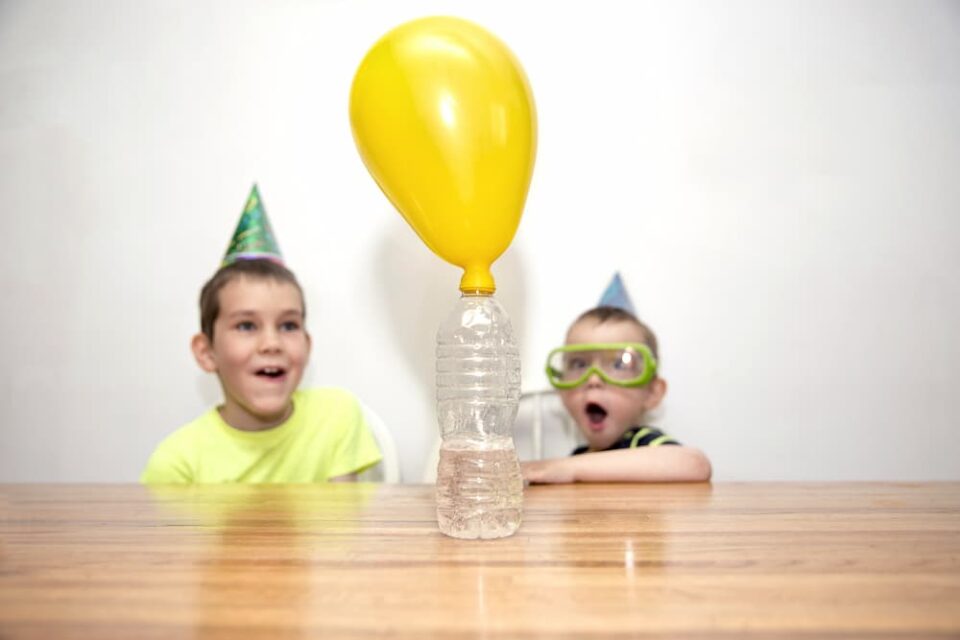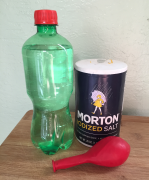
Blow Up a Balloon with Soda Pop
Let’s learn how much air is in a bottle of soda pop! This carbonation experiment for kids combines a fondness for balloons and the fascination with the fizzy bubbles found in soda pop. With just a few supplies and a few steps, you can blow up a balloon with carbon dioxide bubbles. For even more carbonation fun, try one of the variations below!
Uninflated or broken balloons can be hazardous for kids under 8, so keep a close eye on the kids and follow any warning labels that come with your balloons when you do this activity.
Supplies

- Unopened bottle of soda pop
- Balloon of any shape
For an expanded version of the experiment, you’ll also need:
- Another unopened bottle of soda pop, any flavor
- Another balloon
- A spoonful of salt
Instructions
- Stretch the uninflated balloon a few times to make it easier to inflate.
- Place the soda bottle on a table or countertop.
- Open the soda bottle.
- Immediately stretch the balloon’s opening over the neck of the bottle; pull the balloon far enough onto the bottle so it fits snugly.
- Check on the balloon every 10 minutes or so to see how much it has inflated. It will be slow going, but it will get there!
Why It Works
Soda and similar fizzy drinks are carbonated, which means carbon dioxide gas is dissolved into the liquid under high pressure. When you open the bottle, the pressure is relieved, gas expands into bubble formations, and the bubbles of gas begin to escape. The balloon expands with the trapped carbon dioxide gas.
As a bonus lesson, do this experiment with an ice-cold bottle and a bottle at room temperature. You’ll see the balloon attached to the warmer bottle expands at a faster rate. When the soda liquid’s temperature rises, molecules in the drink are more active and allow the gas bubbles more chances to form and to escape.
Extra Credit
Expanded Experiment
- With a fresh bottle and new balloon, repeat the first two steps above.
- Pour a spoonful of salt into the balloon – NOT the bottle. Otherwise you’ll have a big mess!
- Follow steps 3 and 4, being careful not to spill any of the salt into the bottle yet.
- Quickly lift the balloon to pour the salt into the bottle.
- Observe the rapid release of gas bubbles.
